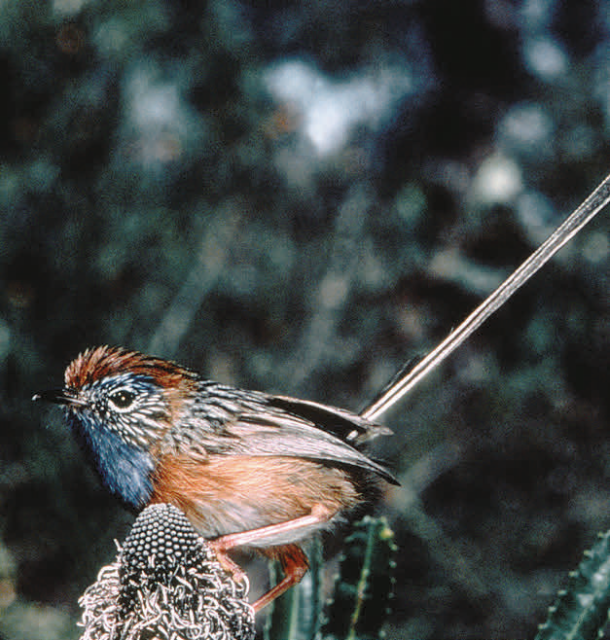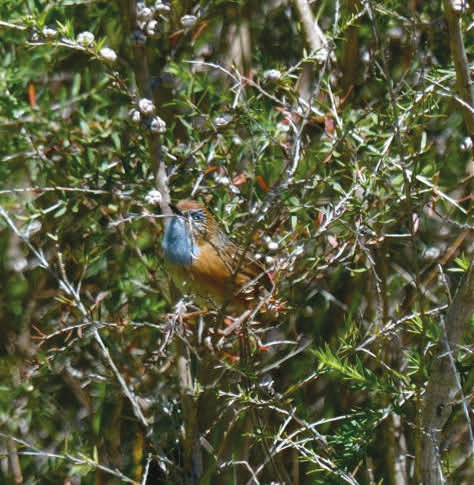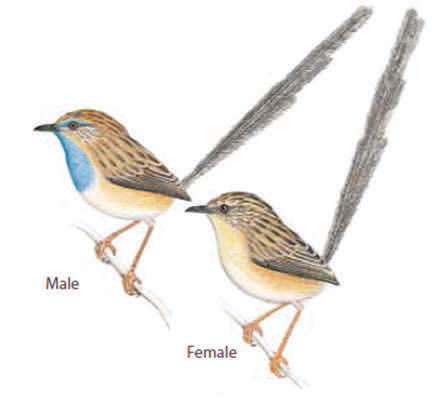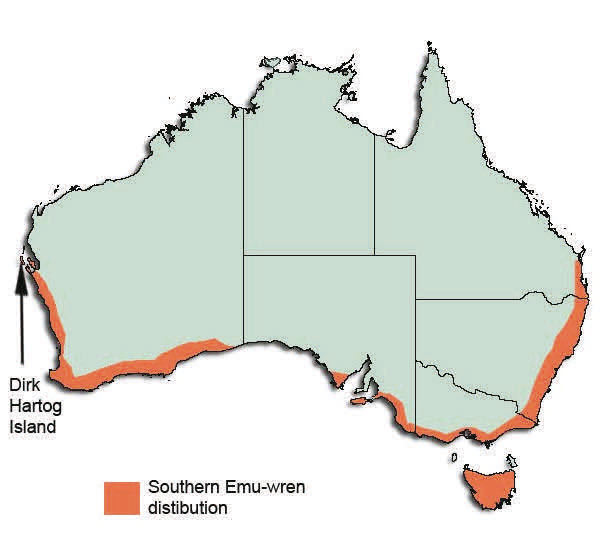Dirk Hartog Southern Emu-Wren
Dirk Hartog Island southern emu-wren
Stipiturus malachurus hartogi
Description

Emu-wrens are so named because of their tail plumes which, like emu feathers, lack the interlocking hooks that usually zip feathers together. As a result the emu-wren’s tail looks like a lacy fan. During flight the 160-180mm emuwren looks like a large insect slowed by the drag of this long tail. Males have purplish-blue bibs and eyebrows.
Diet and habitat

The emu-wren hops around on the ground with its tail erect as it forages, probing vegetation and snatching insects. It will perch high in the scrub to sing a high-pitched descending trill. Sandplain heaths and dune thickets are their habitat on Dirk Hartog Island.
Breeding

On Dirk Hartog Island nesting is from July to August. The domed, oval nest is woven with grass and fine twigs. It has a side entrance and is hidden in dense vegetation close to the ground. 2-4 eggs are laid and the emu-wrens appear to occupy territories as pairs.
Distribution

The mainland southern emu-wren, Stipiturus malachurus, is found in coastal areas around southern parts of Australia. The S.m. hartogi subspecies is only found on Dirk Hartog Island in Shark Bay. It is moderately common but hard to detect.
Distribution

The small and limited distribution of S.m. hartogi leaves it vulnerable to potential threats. This emu-wren is also the least common of Dirk Hartog Island’s endemic sub species.
Fact sheet
SHARK BAY
World Heritage


